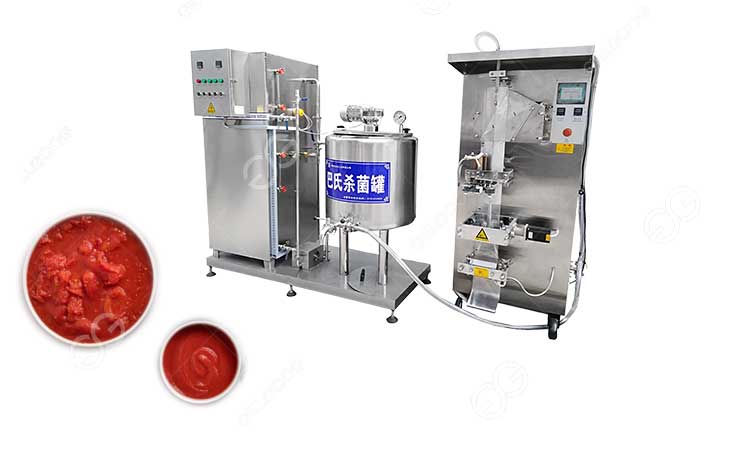How Do You Pasteurize Tomato Sauce?
Tomato sauce is a versatile and beloved condiment that finds its way into countless recipes around the world. Whether it's used as a base for pasta dishes, a topping for pizza, or a flavor enhancer in soups and stews, the safety and quality of tomato sauce are paramount. One crucial step in ensuring the safety and longevity of tomato sauce is pasteurization, especially when produced on an industrial scale in a factory. But how do you pasteurize tomato sauce? In this article, we will delve into the process of pasteurizing tomato sauce in a factory setting.

The importance of pasteurization
Pasteurization is a heat treatment process that was originally developed by louis pasteur in the 19th century to kill harmful microorganisms in food and beverages. When it comes to tomato sauce, pasteurization is essential for several reasons:
Safety: Raw tomatoes and tomato products can harbor harmful bacteria, such as salmonella and e. Coli. Pasteurization eliminates these pathogens, making the sauce safe for consumption.
Shelf life: Pasteurization extends the shelf life of tomato sauce by destroying enzymes and microorganisms that can cause spoilage. This allows manufacturers to store and distribute the sauce for longer periods without compromising quality.
Flavor and quality: Pasteurization helps preserve the natural color, flavor, and texture of the tomatoes, ensuring that the sauce maintains its delicious taste and appearance over time.
The pasteurization process
Pasteurizing tomato sauce in a factory involves precise control of time and temperature to achieve the desired safety and quality outcomes. Here's a step-by-step overview of the process:
Preparation: Before pasteurization begins, the tomato sauce is prepared by cooking and blending ripe tomatoes, spices, and other ingredients. The mixture is then carefully strained to remove any solid particles or seeds, resulting in a smooth consistency.
Heat treatment: The prepared tomato sauce is pumped into a pasteurization vessel or heat exchanger. The sauce is heated to a specific temperature, typically between 180°f (82°c) and 200°f (93°c). This temperature is held for a predetermined amount of time, usually a few minutes. This combination of high temperature and time effectively kills harmful microorganisms.
Cooling: After the required heat treatment, the sauce is rapidly cooled. This step is crucial to prevent overcooking and maintain the sauce's desired quality and flavor.
Packaging: Once the tomato sauce has been pasteurized and cooled, it is ready for packaging. The sauce is typically filled into sterilized containers, such such as glass jars or cans, which are then sealed to create an airtight environment that prevents contamination.
Quality control: Quality control measures, such as checking for proper sealing, labeling, and ensuring that the sauce meets safety and quality standards, are rigorously followed throughout the process.
Automation and technology
Modern factories employ sophisticated automation and technology to ensure the efficiency and consistency of the pasteurization process. Automated systems control temperature, monitor product flow, and provide real-time data on the pasteurization process, allowing for immediate adjustments if necessary. This technology ensures that each batch of tomato sauce is pasteurized to the same high standards.
Pasteurization is a vital step in the production of tomato sauce in a factory setting. It ensures the safety, quality, and longevity of this beloved condiment. Through careful control of time and temperature, as well as the use of advanced technology, manufacturers can produce tomato sauce that not only tastes great but also meets the highest safety standards. If you have any demand of the tomato sauce pasteurizer, contact us now.
